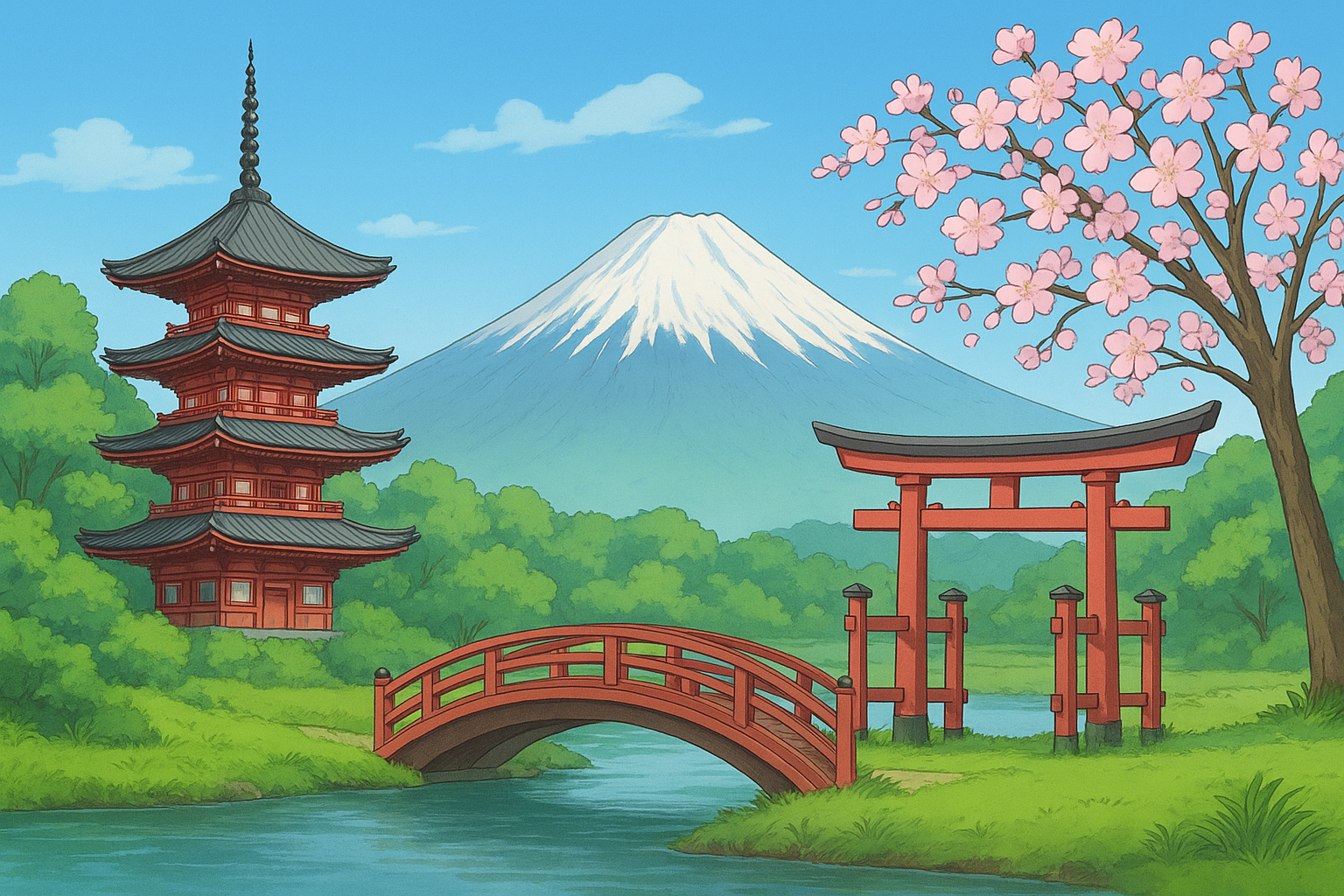
Learn about Aomori
Welcome to Aomori
Aomori City sits where mountains meet the sea on the northern edge of Japan’s main island. Often associated with dramatic winters, clear coastal skies, and abundant local produce, the city is both a gateway to the vast landscapes of Tōhoku and a cultural center with its own rhythms and charms.
History
Aomori’s history stretches back to the Jōmon period, with archaeological sites and shell mounds that speak to a long human presence. Over centuries it developed as a regional hub for fishing, trade, and later, modern industry; these layers of past and present are visible in local museums, preserved sites, and the city’s maritime character.
Current Status
Today Aomori balances traditional industries with tourism and the arts. The city serves as a transport and cultural hub for northern Honshu, and recent decades have seen investment in museums, festivals, and infrastructure that make it accessible while preserving its distinct local identity.
Local Culture
Aomori’s culture is shaped by its seasons and the sea: winter festivals, craftsmanship, and community rituals remain strong. The Nebuta Festival, with its giant illuminated floats and energetic parades, is the best-known expression of regional pride, while smaller neighborhood events, local crafts, and daily market life keep traditions living year-round.
Food
Seafood and apples define Aomori’s culinary reputation. Fresh scallops, squid, and other cold-water catches are celebrated in markets and restaurants, and Aomori’s apples—juicy and aromatic—appear in everything from street snacks to refined desserts. Local izakaya and seafood markets are the best places to taste the prefecture’s flavors simply and memorably.
Attractions
The Nebuta Museum Wa Rasse offers an up-close look at the spectacular floats and the artistry behind the Nebuta Festival. Visitors can admire full-size illuminated works, learn about their construction, and feel the festival’s energy even outside the parade season.
A ride on the Aomori Bay area and its waterfront promenade provides sweeping sea views and easy access to seafood stalls and local cafés. The harbor area is a pleasant place to stroll, watch fishing boats, and sample fresh catches at market stalls.
Aomori Museum of Art blends contemporary installations with regional themes and provides tranquil galleries set against views of the surrounding landscape. Its collections often highlight local artists and the interplay between nature and cultural expression.
Sannai-Maruyama Archaeological Site is one of Japan’s most important Jōmon period sites, offering a tangible connection to prehistoric life in the region. Reconstructed longhouses and displays make it a compelling visit for history lovers and families.
Mount Hakkōda and the nearby highlands invite outdoor exploration year-round, from summer hiking to winter snow activities. The mountain range’s primeval forests, hot springs, and panoramic vistas reward visitors who want to experience Aomori’s wild side.
Practical Tips
Dress for the season—winters are cold and snowy, while summers are mild and lush. Try local markets for fresh seafood and apple treats, and time a visit to coincide with cultural events such as the Nebuta Festival if you can.
Aomori quietly rewards travelers who slow down, savor seasonal food, and take time to explore both the coast and the cultural sites that reveal the city’s layered story.
Travel Guide: Aomori — Danny With Love
A first‑hand, practical city guide covering Aomori’s top sights (Nebuta Festival, Sannai‑Maruyama, Aomori Museum of Art), local food recommendations (scallops, apples), transport tips and nearby day‑trips, with recent photos and personal notes from the author’s visits.
Aomori Prefecture travel guide — Tofugu
An engaging cultural overview of Aomori Prefecture that highlights regional history, major attractions (Hirosaki Castle, Mt. Osore, Jōmon sites), local quirks and offbeat stories, plus links to deeper posts on specific Aomori destinations and experiences.
Complete Guide to Aomori City: What to Do and Where to Stay | Rakuten Travel
A comprehensive tourist guide oriented to international travelers with seasonal highlights (Hakkōda, snow monsters), recommended sights, onsen and accommodation suggestions, and practical travel information for planning visits.
Aomori : Travel Guide, Accommodation & Activities in Aomori | Japan Experience
Concise regional guide focused on Aomori City’s main attractions (Nebuta Matsuri, A‑Factory, Sannai‑Maruyama), shopping and local crafts, suggested itineraries and logistics for visitors exploring the prefecture.
Aomori Trip Tips | Japan-Trip-Tips.com
Practical tips and local food notes for Aomori — including seafood specialties, local dishes like Kuroishi yakisoba, apple recommendations and short‑trip ideas — aimed at independent travelers seeking eating and sightseeing suggestions.
Nebuta House Wa Rasse (Aomori Nebuta Museum)
A-FACTORY
Aomori Prefecture Tourist Center ASPAM
Seikan Connector Ferry Ship 'Hakkōda-maru' (Memorial Ship)
Explore Nebuta House Wa Rasse (Nebuta float museum)
Visit A-FACTORY and taste Aomori ciders
Climb to the ASPAM observation deck
Stroll the Aomori bayfront and Aomori Bay Bridge
Sample local seafood at market stalls and try Ōma tuna
AI is finding the best recommendations for you, it may take minutes...
